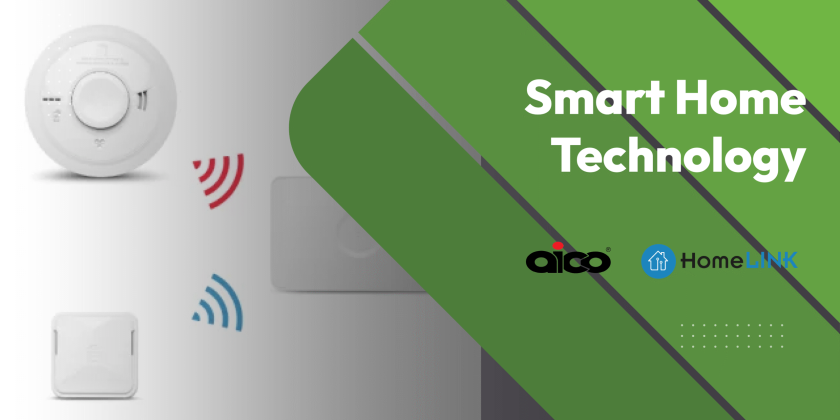In this informative guide, we will delve into the workings of solar storage batteries, exploring their benefits, challenges, and the technology behind them.
Introduction to Solar Storage Batteries
What Are Solar Batteries?
Solar batteries are integral to solar energy systems, serving as storage units for the excess electricity being generated by solar panels. They allow energy to be stored during peak sunlight hours and used when sunlight is minimal, such as at night or on cloudy days.
Essentially, these batteries ensure a continuous power supply, making solar energy a more reliable source. They come in various types, including lithium-ion, lead-acid, and flow batteries, each offering different benefits and efficiencies.
Lithium-ion batteries are popular due to their high energy density and longer lifespan. On the other hand, lead-acid batteries, while more affordable, tend to have a shorter cycle life. Flow batteries are gaining attention for their scalability and longevity.
How Do Solar Storage Batteries Work?
To understand how solar storage batteries work, it’s essential to grasp their basic function in a solar energy system. When solar panels capture sunlight, they convert it into direct current (DC) electricity.
This electricity is then either used immediately or channelled into a battery for storage. The stored energy remains in the battery until it’s needed, typically when the panels aren’t generating power, such as at night or during inclement weather.
At that point, the stored DC electricity is converted into alternating current (AC) via an inverter, making it suitable for household or business use. This process allows for a seamless transition between solar power and stored energy, ensuring a constant supply of electricity.
The efficiency of this system depends on the type of battery used, its capacity, and the overall design of the solar panel setup.
Components of Solar Storage Systems
Key Parts Explained
At the heart of the system are the solar panels themselves, which convert sunlight into electrical energy. This energy then travels to the charge controller, which regulates the flow of electricity into the batteries. The charge controller ensures that the batteries are charged at the correct voltage and prevents overcharging, which can damage them over time.
An inverter is another crucial component of solar system, as it converts the stored direct current (DC) electricity into alternating current (AC), which is compatible with most household appliances.
Lastly, a monitoring system is often included to track the performance and efficiency of the solar setup. Understanding these components and their functions is essential for maintaining and optimising a solar storage system, ensuring it meets energy needs effectively.
Battery Types and Differences
When selecting a battery for a solar storage system, understanding the different types and their characteristics is crucial. The most common types of solar batteries include lithium-ion, lead-acid, and flow batteries.
Lithium-ion batteries are favoured for their high energy density, compact size, and long lifespan, making them ideal for residential and commercial use. However, they can be more expensive upfront.
Lead-acid batteries, while more affordable, have a shorter cycle life and require regular maintenance, making them less suitable for long-term use. They are often used in off-grid systems where cost is a major consideration.
Flow batteries, although less common, offer the advantage of scalability and longevity, making them suitable for larger installations. They use liquid electrolytes to store energy, which allows for easy scaling but can require more space.
Each solar battery storage system type has its own set of advantages and drawbacks, and the choice largely depends on specific energy needs, budget, and space availability.
Inverter and Controller Functions
The inverter and controller are main parts of a solar storage system. The inverter’s primary function is to convert the direct current (DC) electricity generated by solar panels and stored in batteries into alternating current (AC), which is suitable for use in homes and businesses.
Without an inverter, the stored energy from solar electricity would be incompatible with most electrical appliances.
On the other hand, the charge controller regulates the flow of electricity between the solar panels and the batteries. It ensures that the batteries are charged at the correct voltage and prevents overcharging, which can significantly reduce battery lifespan and efficiency.
Advanced charge controllers may also include features like maximum power point tracking (MPPT) to optimise the energy harvest from the solar panels.
Together, the inverter and controller ensure that the solar storage system operates efficiently, providing a reliable and consistent power supply. Understanding their functions is crucial for anyone looking to optimise their solar energy setup.
How Solar Batteries Store Energy
Energy Conversion Process
The energy conversion process in a solar storage system is central to how solar batteries store energy efficiently. Initially, solar panels capture sunlight and convert it into direct current (DC) electricity. This electricity then flows through the charge controller, which regulates and optimises the voltage to safely charge the batteries. Once stored, the DC electricity remains in the battery until it’s needed.
When the stored energy is required, the inverter steps in to convert the DC electricity into alternating current (AC), making it usable for household or commercial applications.
This conversion process is essential because most appliances and electrical systems operate on AC electricity.
The efficiency of this energy conversion process impacts the overall performance of the solar storage system.
High-quality inverters and charge controllers ensure minimal energy loss during conversion, maximising the usable electricity generated by the solar panels.
Charging and Discharging Cycles
A charging cycle begins when solar panels generate electricity, which is then stored in the battery through the charge controller. The battery accumulates this energy until it reaches its maximum capacity.
Once the battery is fully charged, the system either diverts excess energy back to the grid or stops the charging process to prevent overcharging.
Discharging happens when the stored energy is utilised, typically during periods when solar panels aren’t generating power, such as at night or on cloudy days. The energy stored as direct current (DC) electricity is converted into alternating current (AC) by the inverter for everyday use.
The efficiency and lifespan of a solar battery are often measured in terms of how many charging and discharging cycles it can undergo before its capacity significantly diminishes. Properly managing these cycles is crucial for maintaining the longevity and efficiency of the solar storage system.
Efficiency and Capacity Insights
Efficiency refers to how well a battery converts and stores energy, with higher efficiency indicating less energy loss during these processes. Most modern solar batteries boast efficiency rates between 80% to 95%, meaning only a small percentage of the energy is lost during charging and discharging cycles.
Capacity, shows the total amount of energy a battery can store, typically measured in kilowatt-hours (kWh). A battery’s capacity determines how long it can supply power without receiving additional energy from solar panels.
It’s important to match the battery’s capacity with the energy needs of the household or business to ensure continuous power supply. Factors like temperature, depth of discharge, and the age of the battery can affect both solar battery storage efficiency and capacity, making regular maintenance and monitoring essential for optimal performance.
Benefits and Challenges
Environmental and Economic Advantages
Solar storage batteries offer significant environmental and economic advantages, making them an appealing choice for sustainable energy solutions. Environmentally, they enable the efficient use of solar power, reducing reliance on fossil fuels and lowering carbon emissions.
By storing surplus energy, these batteries ensure that renewable energy is used even when solar panels are inactive, their carbon footprint and promoting a greener and cleaner energy consumption pattern.
Economically, solar storage batteries can lead to substantial savings on electricity bills. By storing energy for use during peak demand times when electricity rates are higher, users can reduce their reliance on grid electricity and avoid peak pricing.
Additionally, in some regions, surplus stored energy can be sold back to the grid, providing an extra source of income. Over time, the cost savings from reduced energy bills and potential earnings from energy sales can offset the initial investment in solar storage systems, making them a financially viable option for many households and businesses.
Common Challenges and Solutions
While solar storage batteries present numerous advantages, they also come with challenges that need to be addressed.
One common issue is the high initial cost, which can be a barrier for many potential users. Another challenge is the lifespan of batteries, which may require replacement every few years. Choosing high-quality batteries and maintaining them properly can extend their life and improve return on investment. Some users of battery storage may also face space constraints, as certain battery types require significant installation space.
Opting for compact battery options, like lithium-ion, can help in such scenarios. Additionally, efficiency losses can occur due to temperature variations and improper charging cycles. Installing batteries in a controlled environment and using advanced charge controllers can minimise these losses.
Future of Solar Storage Technologies
Current research and development efforts are focused on creating batteries with higher energy densities, longer lifespans, and lower costs. Innovations like solid-state batteries are gaining attention for their potential to offer safer and more efficient energy storage compared to conventional lithium-ion batteries.
Additionally, improvements in battery recycling processes are being explored to address environmental concerns associated with battery disposal. The integration of smart technology into battery storage system is another area of growth, enabling better energy management and optimisation of storage systems through real-time data and artificial intelligence.
As technology evolves, we can also expect increased adoption of hybrid systems that combine different storage technologies for enhanced performance. These advancements are set to make solar storage more accessible, efficient, and sustainable, paving the way for a future where renewable energy is a dominant force in global power generation.
Choosing the Right Solar Battery
Factors to Consider
Firstly, consider the battery’s capacity, which should align with your household or business energy consumption patterns. A higher-capacity battery can store more energy and provide power for longer periods when solar generation is low. Next, examine the efficiency and cycle life of the battery.
High-efficiency solar batteries work to convert and store energy with minimal losses, while a longer cycle life means the battery can handle more charge-discharge cycles before its performance degrades.
Cost is another critical factor, including initial purchase price and long-term maintenance expenses. It’s essential to balance affordability with quality to maximise return on investment.
Additionally, consider the battery type—whether lithium-ion, lead-acid, or flow—based on space availability, maintenance requirements, and environmental conditions.
Finally, check for warranties and support services provided by manufacturers to protect your investment and ensure reliable operation over the battery’s lifespan.
Popular Brands and Models
Tesla’s Powerwall is well-known in the market, offering a high-capacity lithium-ion battery with advanced features like real-time energy monitoring and seamless integration with solar systems.
Another reputable brand is LG Chem, which provides the RESU series, known for compact design and robust performance.
Additionally, BYD offers a range of battery models suitable for various applications, emphasising flexibility and durability.
Each brand and model comes with unique features and benefits, making it essential to compare them based on specific energy needs, budget constraints, and installation conditions to find the best fit.
Installation and Maintenance Tips
Proper installation and maintenance are crucial for maximising the lifespan and efficiency of a solar battery.
During installation, ensure that the solar battery system is placed in a well-ventilated and temperature-controlled environment to prevent overheating and improve performance.
It’s also important to follow the manufacturer’s guidelines and use professional services to ensure a safe and correct setup.
Wiring should be checked for proper connections to prevent energy loss or safety hazards.
Regular maintenance is essential to keep the battery in optimal condition. This includes monitoring charge and discharge cycles, checking for any signs of wear or damage, and maintaining a clean environment to prevent dust and debris from affecting performance.
Additionally, software updates for smart batteries can enhance functionality and efficiency. By following these tips, you can ensure a reliable and long-lasting solar storage battery system, that continues to meet energy needs effectively.



